Requiem for a Flying Cigare ¹
 I am saying goodbye to Le Cigare Volant, at least to the wine that I’ve made in a certain, distinctive style for so many years.[2] It’s just a wine, of course, and presumably for as long as I continue to ply my trade, I will make other cool wines, maybe even a few ultimately far more serious or “important” than Cigare, at least it is my fervent hope that I do. But Le Cigare is an old friend, arguably the wine that really boosted my career, gave me a certain degree of self-confidence in the righteousness of my path[3] (maybe even bordering on a measure of arrogance) and, almost certainly was responsible, for good or not, for my ascribed identity as the “Rhône Ranger.”
I am saying goodbye to Le Cigare Volant, at least to the wine that I’ve made in a certain, distinctive style for so many years.[2] It’s just a wine, of course, and presumably for as long as I continue to ply my trade, I will make other cool wines, maybe even a few ultimately far more serious or “important” than Cigare, at least it is my fervent hope that I do. But Le Cigare is an old friend, arguably the wine that really boosted my career, gave me a certain degree of self-confidence in the righteousness of my path[3] (maybe even bordering on a measure of arrogance) and, almost certainly was responsible, for good or not, for my ascribed identity as the “Rhône Ranger.”
Le Cigare Volant is typically referred to as a “Rhône blend,” or a “GSM” as the Aussies so brusquely refer to the category. I confess to being slightly tormented by the nomenclature, which (perhaps it’s only me) I find both awkward and discomfiting. “GSM” while seemingly straightforward and objective seems a bit reductive, and a-contextual; can a serious wine be principally represented by a mere laundry list of its components? (Terroirists certainly wouldn’t have it so.) Referring to the wine, provenant of California’s Central Coast as a “Rhône blend” or a “California Rhône blend” somehow just makes matters worse. Make up your mind! Is it from the Rhône or is it from California? When people at large, loud public tastings ask me what Le Cigare Volant is I might carefully tell them something like, “It’s a California wine made from grape varieties best known for the wines that they produce in the Rhône.”[4] I’ll say this maybe three or four times and as I begin to get hoarse from shouting over the noise, I will give up and default to the the simplistic “It’s a GSM!” route.[5],[6]
The name “Cigare Volant” and the term “Rhône Ranger” are arguably quite brilliant for their vivid memorability, but they may also carry with them a certain tragic flaw or two. The term “Le Cigare Volant” makes reference to the crazy (but effective) ordinance adopted in 1954 in a village in Châteauneuf, which by decree prohibited the landing of UFOs in their vineyards. (“Flying cigars” being the French term for cylindrically shaped unidentified flying objects.) To help contextualize what would be an “American Rhône,” the name alludes to Châteauneuf-du-Pape in a sly, ironic way, which was my intention, after all, but after a certain point (35 years!), might it not be time to let the wine begin to stand on its own?[7]
And of course, there is the term Rhône Ranger – this was the clever moniker I was given by the Wine Spectator in 1989, when I was on their April 1st cover. Not long after the article came out, the term was taken up by an ad hoc group of winemakers, all interested in exploring the possibilities of Rhône varieties in California and ultimately later winemakers from other parts of the U.S. joined in.[8] The association grew, became formalized, and there are now hundreds of winemakers working with Rhône varieties throughout in the U.S. I wish them all well but I feel personally that “Rhône Ranger” as a term has butted up against a certain wall. We Rangers have defined ourselves in terms of something other than ourselves, something that is arguably far more primary, and thus in some sense more authentic and meaningful. Perhaps what we’ve been most successful in doing is introducing American customers to the beauty of Rhône wines inclusive of those that actually come from the Rhône! Moi, I don’t know if I am still in my heart a Rhône Ranger any longer; candidly, I would much prefer to be the San Juan Bautista Ranger, or even better, the Pope of Popelouchum, though, in fairness, that is perhaps a tad grandiose.
I am incredibly proud of the thirty-four vintages (1984-2017) of Cigare Volant that we have produced; each one is a bit different from the other, but each, with the very occasional exception,[9] somehow captures a sense of “Cigareness,” a quality I am at a loss to define with any precision, apart to say that a certain threshold level of succulent savoriness has been achieved; it becomes a sort of “continuo” element in the wine, a bass hum of umami and fruit, independent of say the tannic structure of the wine. (I suspect this is due to our rigorous conservation of lees, and our predilection for minimal racking.)
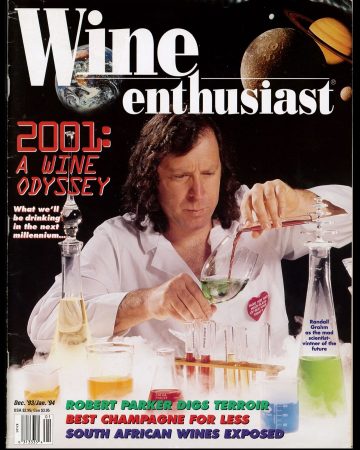 Le Cigare Volant has given me the opportunity to show the world my blending chops, as it were. A few have taken notice, the long-time fans, but for the most part, the world is just moving too fast for this to have been that big of a deal. (The world has been rather more observant of some of my splashy marketing initiatives and of the labels/packaging, to be sure.) But, as I’ve said elsewhere, a wine that is merely the product of the winemaker’s imagination and aesthetic sense remains limited in its complexity and its power to captivate, enchant and create emotional resonance in the consumer; I believe that it is only vins de terroir, wines of place, that can express real profundity and can echo, however discreetly, the vast intelligence and organization of Nature itself. With a true wine of place, the winemaker “does” far less but paradoxically achieves far more.[10]
Le Cigare Volant has given me the opportunity to show the world my blending chops, as it were. A few have taken notice, the long-time fans, but for the most part, the world is just moving too fast for this to have been that big of a deal. (The world has been rather more observant of some of my splashy marketing initiatives and of the labels/packaging, to be sure.) But, as I’ve said elsewhere, a wine that is merely the product of the winemaker’s imagination and aesthetic sense remains limited in its complexity and its power to captivate, enchant and create emotional resonance in the consumer; I believe that it is only vins de terroir, wines of place, that can express real profundity and can echo, however discreetly, the vast intelligence and organization of Nature itself. With a true wine of place, the winemaker “does” far less but paradoxically achieves far more.[10]
So, here’s the deal: The things that we’ve done to date to make the “best” Cigare Volant have not been particularly remunerative; holding the wine for as long as we do before release is a cost accountant’s nightmare. Sealing the wine in screwcaps, for the record, while enhancing the wine’s overall longevity—a good thing, right?—tends to push a young wine deeper into its protective, reductive cocoon,[11] requiring a longer hold time before release.[12] Small scale winemaking at our Ingalls St. facility, ever since the spin-off of the Big House brands, has also proven to be a very expensive way to make wine. All of these issues would likely work out just fine if we were able to sell most of our wine directly to our customers, or were not obliged to offer special killer deals through the wholesale channel on by-the-glass pricing. [13]
But Cigare in its current format seems to have lost a certain relevance to the modern market. It has become a bit like the brilliant, slightly eccentric uncle whose bad puns, meandering stories and arcane references are amusing at holiday get-togethers, but maybe just once a year now seems to be about the right frequency for a visit. For any number of reasons, it seems we have not been able to successfully deliver the cogency of Cigare’s value proposition to market. Without the authority of provenance, that all important “origin story,” how do you communicate the value of a wine that merely tastes great? Transmitting the “message in the bottle” has always been the challenge, and now it is more challenging than ever. Cigare Volant, as it is currently configured does not carry with it a pedigree of provenance, either genuine or symbolic/ceremonial, i.e. it’s a blend of grapes from diverse climes and terroirs, neither does it carry the authority of an Estate bottling designation, nor one of organic or biodynamic certification or any of the other potential signifiers of “seriousness.”[14] It simply presents itself as it is, and without a bright and shiny signifying label (the actual label is just fine), it just doesn’t shout, “Pick me!”
I’ve written endless pages on the history of Le Cigare Volant, how it came to bring my young winemaking career into focus, helped me find both my style and mojo as a winemaker. It was my vehicle in any number of senses—I have a vintage Citroën DS-21, which is “Le Cigare,” and there are any number of sculptural spaceships I’ve commissioned over the years that remain scattered throughout the Doonscape.[15] It’s been my schtick, to use the term of art, and has served me well; to some extent, it could be argued that it has become in a sense a sort of crutch, or at least a ready-made scaffolding on which to build a long-winded oratory (such as the one you are reading this moment). Have I become the gas-bag uncle who just doesn’t know when to shut up?
It occurs to me that I’m very comfortable to use Cigare as an occasion to talk about clever winemaking innovations we’ve implemented—the use of demijohns and “lees-hotels,” for example, the sublimity of this clone or that clone, the magic of air-dried grapes, the mystery of reductive élevage en bonbonne, all the winemaking tricks that the show-off kid in me wants to share.[16] But, in this candid conversation about Cigare, I have found myself resisting a discussion about how does it actually feel to say goodbye to Cigare, (at least in the form in which we’ve known it) or what does this change really signify. Maybe, it’s a certain, Monty Python Black Knight-ish reticence about wishing to admit vulnerability or defeat. “No worries, mate. Not being able to sell as much Cigare as we’d like at full price is merely a scratch, nothing but a minor flesh-wound (gushing gouts of red).” We’ve certainly had our share of inexplicable marketing setbacks in the past.[17] But, if I’ve been incapable of breathing real dynamic life into Cigare Volant, our flagship wine over the last dozen years since the Big House divestiture, what does this mean about my ultimate viability as a winemaker/winery owner? Is my fate thoroughly dooned?
I’ve had a long time to think about how the rocket/spaceship somehow failed to achieve its desired trajectory. For a long time, the story I’ve told myself is that the BDV brand, at least in so far as its ability to sell a luxury cuvée such as Cigare may well have been tainted by association with the large production wine, Big House. Robert Parker himself commented at some point that while BDV may have presented itself as a small, boutique winery, it was in fact nothing more than a wine factory, and therefore incapable of producing soulful wines of distinction.[18] It’s hard to know whether his pronouncement of more than twenty years ago continues to magically resonate like the imprecation of a wizard from Middle Earth.[19] Since the sale of Big House, my colleagues and I have made what at least we imagined was a heroic effort to re-animate Cigare—certainly, by paying far more attention to the vineyards and the winemaking itself—and of course have made non-trivial attempts in the marketing of same. Frankly, in trying to tell the Cigare story, it sometimes feels as if I’ve found myself caught in a sort of silent movie; I’m gesturing wildly and shouting at the top of my lungs but no one can hear what I’m saying, because, of course, it is a silent movie.
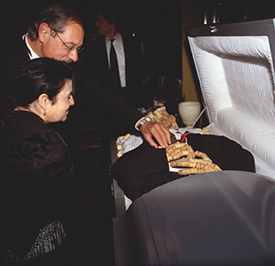 As human beings, we are always trying to find an explanation for why things go the way they do, especially in times of adversity. One thing is for certain, the wine business itself has changed rather dramatically; there are now so many more structural challenges to success. Most wholesalers of any scale at all are generally far less enthusiastic about selling “quirky” wines, i.e. ones that require that quaint old-fangled technique called the “hand-sell,” an old practice lauded by many but that few wish to actually execute in practice. Whether the wine business was just much smaller and more manageable then, (or maybe I had greater marketing mojo at the time), it seemed that in some way one could through one stratagem or another positively affect one’s fate in the marketplace. Need to differentiate Big House from other wines? Seal it with screwcap! Customers not so accepting or fearful of screwcaps, you say? Hold a funeral for M. Thierry Bouchon! There always seemed to be some sort of work-around, and one had the sense of the power of one’s own agency.[20] I still believe that on a small, intimate scale, one can effectively tell one’s story and effect a positive outcome, but at least in the world of the three-tier system, possibly the best a smallish winery might do these days is to carefully discern where certain useful oceanic currents are moving, or, since we are reliant here on more aeronautical metaphors, how and where blow the strongest winds, the most persistent and reliable updrafts—ideally ones that will take one in a positive direction.[21] While it would be a wonderful thing to have the luxury and comfort of a high powered flying machine, for many of us, learning to be an ultra-light wind-surfer may be the more sustainable model.
As human beings, we are always trying to find an explanation for why things go the way they do, especially in times of adversity. One thing is for certain, the wine business itself has changed rather dramatically; there are now so many more structural challenges to success. Most wholesalers of any scale at all are generally far less enthusiastic about selling “quirky” wines, i.e. ones that require that quaint old-fangled technique called the “hand-sell,” an old practice lauded by many but that few wish to actually execute in practice. Whether the wine business was just much smaller and more manageable then, (or maybe I had greater marketing mojo at the time), it seemed that in some way one could through one stratagem or another positively affect one’s fate in the marketplace. Need to differentiate Big House from other wines? Seal it with screwcap! Customers not so accepting or fearful of screwcaps, you say? Hold a funeral for M. Thierry Bouchon! There always seemed to be some sort of work-around, and one had the sense of the power of one’s own agency.[20] I still believe that on a small, intimate scale, one can effectively tell one’s story and effect a positive outcome, but at least in the world of the three-tier system, possibly the best a smallish winery might do these days is to carefully discern where certain useful oceanic currents are moving, or, since we are reliant here on more aeronautical metaphors, how and where blow the strongest winds, the most persistent and reliable updrafts—ideally ones that will take one in a positive direction.[21] While it would be a wonderful thing to have the luxury and comfort of a high powered flying machine, for many of us, learning to be an ultra-light wind-surfer may be the more sustainable model.
I think that perhaps what my Cigare experience has tried to teach me is a certain sort of humility.[22] There are things that I can properly effect and things that I cannot; it is ultimately most useful to focus on that which one can potentially control, as well as, (very importantly) acknowledge the enormous power of that which is beyond one’s control. Cigare has always been a sort of performative exercise, and always strongly bounded by my own significant limitations. A composed wine is only as clever as the winemaker him/herself, and frankly, that ain’t so clever.[23] I am hoping that the lessons of Cigare will potentially equip me to become a far more successful as a winemaker by perversely teaching me to do less “winemaking.” I must instead tack in the direction of the vineyard, i.e. learn to make wines with less of my own thumbprint, and more of the imprint of the vineyard from whence they derive. The best wines one can make are the ones where there is very little “making,” but rather more “enabling.” The truism that wine is made in the vineyard we’ve heard over and over, but it takes some of us more than thirty years for the message to really get through.
The other odd thing that strikes me: Perhaps the greatest gift that Cigare has given me is that it was not particularly successful in garnering high point scores. While stellar marks might well have likely helped out significantly in terms of sales and financial performance, I’m rather doubtful that it would have been particularly useful in my growth as a winemaker and perhaps as a person. In the same way that many students learn how to take tests (so they can do better on tests) rather than actually learn something truly valuable, learning how to make high point scoring wines really only teaches you how to make high point scoring wines. If you find out that you have acquired a facility for doing this, I believe it would take an enormous amount of self-control not to exercise this gift. It is much more challenging (and perhaps ultimately more satisfying) to learn how to make wines to please oneself rather than the Other, and perhaps the practice of learning to please oneself may ultimately be the surest path to a clearer view of one’s own true talents as well as limitations. Perhaps with the current version of Cigare I had in fact achieved all that I was truly capable of mastering on my own; it was certainly time for a paradigm shift, and like it or not, it has come.
It is now time to say goodbye to an old and loyal friend, and to look forward to the thrill of the discovery and exploration of the new and joyous wines that await. Le Cigare est mort; vive le Cigare!
[1] After posting this blog, there has been a rather significant outpouring of concern that Cigare is disappearing as a BDV brand. For the record, that is not the case. It is the style which is changing—to an earlier to drink, more approachable, and (one trusts) commercially far more viable proposition. Vive le Cigare!
[2] We will continue to produce a wine (precise nomenclature of which still in suspense) based on the principal Cigare/Châteauneuf grape varieties, though with a significantly higher percentage of the super-cool cépage, Cinsault, intended for much earlier consumption and priced significantly lower than the current Cigare. Preliminary blends suggest that it will still be utterly delicious, indeed dangerously quaffable, just no longer a vin de garde. And of course, it’s no longer a GSM, but rather something more like a CGS.
[3] Of course I started making Cigare well before I got fancy notions of the sublime virtue of terroir lodged in my brain, and I suppose the great strength of Cigare (also its weakness) was that it is a composed wine from diverse sites, i.e. without the authoritative provenance of a unifying terroir. I was clever or at least intuitive enough to realize when I started that I was essentially shooting in the dark, working with unknown grapes and with minimal winemaking experience, I really had no choice but to blend different things together with the hope that somehow I could fashion a coherent, reasonably complex whole. When you’re cobbling things together without a definitive blueprint sketched out from divine authority (the Ten Commandments, or A.O.C., for example), or by the hierophantic imprimatur of one of His Apostles (St. Robert or St. Marvin), doubts might arise as to the ultimate value of your proposition. Ultimately, it’s the ability to command a certain price in the market that determines the wine’s “objective” value, and it has ever been thus.
[4] It’s even more convoluted to explain that Grenache, the typically dominant grape in Cigare, while being the most important grape in Châteauneuf-du-Pape, in fact originates from Spain where it is called “Garnacha.”
[5] Alternately, I might say, “It’s a California homage to Châteauneuf-du-Pape,” but this is not particularly accurate either. I can certainly say that Le Cigare historically began as an homage to Châteauneuf-du-Pape, but over the years, I found that a) I don’t really like most modern versions of Châteauneuf, and b) I really wanted Cigare to cut its own unique swath stylistically speaking and ultimately not be so referential, but that makes the language even more awkward.
[6] We are certainly living in an age of great noise, and getting one’s message across is a bit like shouting in a windstorm. There is an interesting trope from Thomas Pynchon’s “Crying of Lot 49,” where a character is recording a segment for rebroadcast and is intentionally mispronouncing certain words. When someone asks him about why he is intentionally mispronouncing the words, he says that due to the sound distortion built into the recording and re-broadcasting process, mispronouncing the word actually ends up having it heard correctly by the ultimate auditor. Whether or not this analogy applies to the case of Le Cigare Volant, I do sometimes imagine that it is paucity of our language, or maybe it’s just my language, that impairs my ability accurately capture and represent the real essence of the wine under discussion. No question that our minds are always actively seeking neat categories in which to place the objects we encounter on an ongoing basis; the most interesting wines of course are sui generis and verbally accounting for them strains our ability to adequately describe them.
[7] There is certainly a very memorable, iconic quality to a “flying cigar” on a wine label, and the ability to riff on this imagine has been a wellspring of inspiration to me over the years. The recent sighting of the cigar-shaped asteroid, “Oumuamua,” for example, with its potential promise/threat of extraterrestrial surveillance/intervention, has yielded a reasonable crop of associations amongst Cigare Volant aficionados. Cigare Volant has become my sort of go-to trope, if you will. (But what could be more appropriate to the Luftmensch that I am?)
[8] There is in fact a nice sort of resonance in the Western frontier imagery of the “Rhône Rangers.” Not exactly outlaws within the wine community, but certainly outsiders, the original Rhône Rangers would come together as a group (a posse comitatus), when the need for a sort of righteous vinous intervention within the community arose.
[9] There are two “lost vintages,” the ’97 and ’98, which were foolishly sealed with synthetic closures (pre-screwcap), leading to a premature evolution of the wine. A real pity, as these were absolutely stellar wines.
[10] It is ironic, of course, that making the simplest wine at all, a 100% Grenache from Popelouchum, in the most rudimentary way possible, without the great, heroic effort of blending a number of varieties together to create complexity, has, at least on a preliminary basis (a very small test batch in 2015), proved to be perhaps the most exciting wine we have ever produced, and its “story”—the Popelouchum story—just reeks of authenticity and romance.
[11] I’ve written about this paradox before; the winemaking techniques that make the wine less prepossessing in its youth seem to be required to enable a wine to achieve a greater degree of ultimate excellence.
[12] Granted, this is a very heavy lift to accomplish by oneself, but one frustration I have had in communicating the “value” of Cigare is that I’ve not been able to successfully communicate the great virtue of vinous qi, or life-force, i.e. the ability to resist oxidation. “Tell me where is fancy bred? Or in the heart or in the head?” (Or in 90+ point scores?) While ultimately “greatness” in wine reposes in so many elements, originality, complexity, integration, one element must certainly be the quality of persistence, a quality that Cigare exhibits in spades.
[13] It is very difficult to achieve really meaningful volume on a wine through restaurant sales unless one hits a certain attractive price point, which is to say a price lurking somewhere in the sub-$12/glass range. Simply putting Cigare Volant on a wine list in a restaurant somewhere in East Fruit Bomb-F*** will likely cheer the heart of the (fellow-) traveler/Cigare aficionado, who finds himself or herself far, far away from home, attending a Widget implementation conference, but this increment does little to generate meaningful sales numbers. Being able to shift significant volume through the retail (off-sale) channel, that is to say in wine shops, may actually be a big part of the answer. But, because we find ourselves in what perhaps might be termed the Cali Yuga (sic), i.e. the prevalence of overwrought winemaking and overwrought wine-writing, wines of restraint and balance (Cigare Volant is Exhibit A!) seldom garner the approbation of most of the influential critics. (There actually have been some recent exceptions to this datum, viz. recent rave reviews on Cigare and other BDV wines from Josh Raynolds in Vinous, but, alas, I fear these have come rather too late in the game). Larger retail chains have become essentially 100% dependent on point scores to sell their wines and smaller, fine wine shops (an alarmingly diminishing population) have perhaps eschewed stocking Cigare for its perceived (and imagined) ubiquity, possibly imaginarily tainted by former association with the Big House brand.
[14] Our own vineyard, Popelouchum, in San Juan Bautista, will ultimately likely carry this certification, but if this is not a practice that derives from a sincere value system that they’ve internalized, persuading growers to farm biodynamically without the decision coming from the heart seems to be utterly futile.
[15] One doesn’t even want to begin to go into the potential Freudian implications of my rather total identification with the “Flying Cigare.” Sometimes a Cigare is just a bottle of wine or merely a landing craft from an advanced civilization.
[16] One tentative conclusion I’ve reached is that I’m not sure our customers are particularly interested in the very geeky technical issues brought up in the production of Cigare Volant. I think that perhaps the more evocative, poetic, emotional language of the wine itself (ideally referential to place and to the natural world) makes the far more compelling argument.
[17] Contra, an utterly fabulous wine composed of old-vine Carignane, Zinfandel and Mourvèdre, should have sold brilliantly, but it did not set the world on fire. (Perhaps the original “couch label” was a bit outré.) The Querry cider and the Proper Claret, likewise, should all have been home-runs—great value, great packaging – but they were not. On the side of the wholesalers and retailers who represent our wines, we have not made their life particularly easy with the initiation of so many new products in our portfolio; they have often wondered at times where to find the unifying thread of our sometimes eclectic product line.
[18] His criticism really stung, if only because there was a certain element of truth to it. Perhaps Cigare had grown a bit formulaic through the early to mid- ’90s, and to some extent I was perhaps phoning it in for a few years, especially as Big House was growing rapidly. Indeed, we were then perhaps not really on a significant path of learning and improvement (that wouldn’t happen again till the early aughts, but, alas, the damage was already doon.)
[19] Then there is the somewhat more obvious hypothesis that subtle, elegant wines typically fail to gain the attention of press/influencers, (unless they are accompanied by a very strong and coherent story, as we have already discussed at some length).
[20] As a very young, inexperienced winery owner, in 1982 I stupidly ended up producing way more pink wine than I could reasonably sell. I further compounded the problem—I don’t even remember how or why this happened—by blending two vintages of pink wine together, our Vin Gris, and now I had too much non-vintage pink wine on my hands. Remember, BDV was still an utterly unknown winery, with distribution limited to California. So, I published something I called the Vin Gris Digestivo, a monthly publication with jokes, stories and factoids about pink wine, along with a tally of number of extant cases of non-vintage Vin Gris remaining in inventory. This was pre-internet, so it was a printed letter sent to our wholesale and retail customers. It was frankly a sort of David Letterman-ish thing to do, but it came from a sincere desire to creatively engage customers (and shift the damn wine that was languishing in the warehouse). Maybe people had more time on their hands in the day to attend to this sort of foolishness, or I just wore them down, but eventually we were miraculously able to sell all of the wine. My mother, Ruthie, who sold the wine for a while in Los Angeles, greatly helped this effort.
[21] I am certainly not saying that one should embrace or even follow the macro-trends, most especially if they run utterly counter to one’s deepest beliefs and ethics. But rather, it seems imperative to try to develop the wit, the sensitivity, to discern the possibilities of certain micro-niches that exist within the larger macro-environment, wherein one might successfully thrive.
[22] I’ve written so many promotional pieces about Cigare—indeed at least one (indeed, usually many more than one) every year for the last thirty four years, and the angle has always been something like what new and unique thing did we learn about grapes or winemaking or minerality or whatever this year. It has never really felt appropriate to talk about what went wrong, if you will. Le Cigare Volant has been a vin d’effort on every level; I’ve used my words as well as my winemaking talents to try to create a certain outcome. I welcome the day when fewer words are needed, and the wine can perhaps speak for itself to a much greater extent.
[23] There is an interesting corollary to this, as far as wine sales, and especially apt to a discussion of a wine called “the flying cigar.” For as long as I’ve been in the business, people would always way, “Selling wine is not rocket science.” I think that while that observation may well have been true for a very, very long time, I’m beginning to believe that selling wine, at least through the wholesale channel, is in fact every bit as complicated as rocket science.

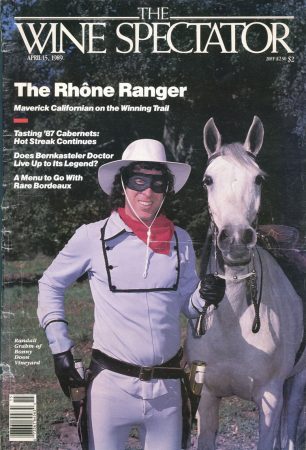
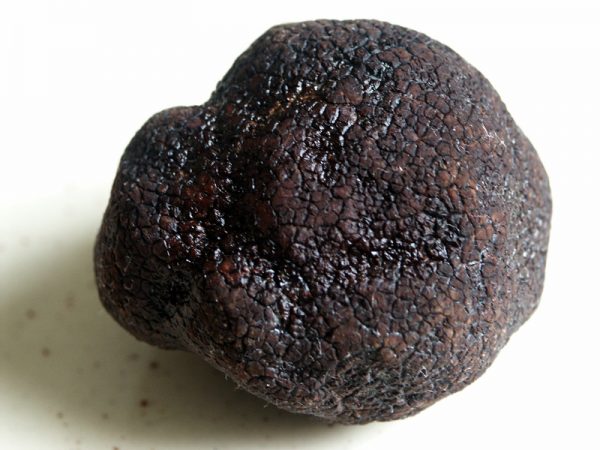
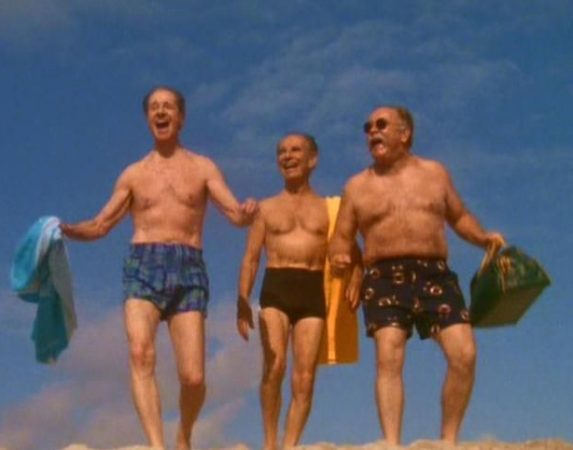

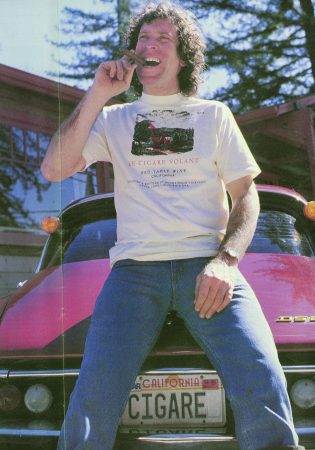
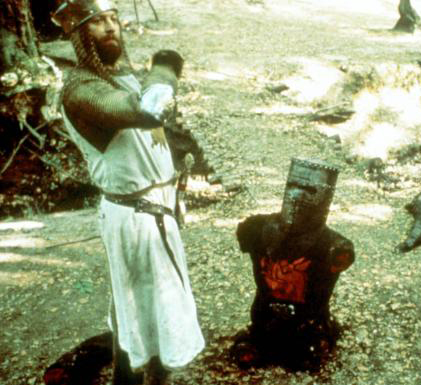
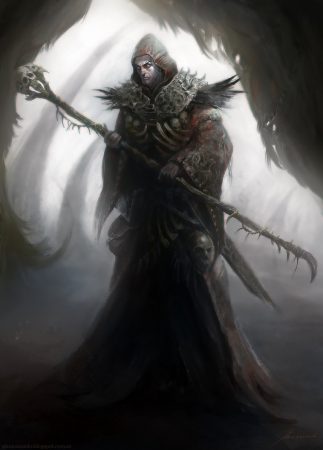


44 Responses to “Requiem for a Flying Cigare ¹”
This wine is the absolute reason I ever entered the wine business 30 years ago. It is Ground zero for me and I have included it in every list I have ever written. The poster of the label has hung in every office I’ve ever had. Very sad to see it go.
Melissa,
Thank you so much for your support for all these years. Please note that it is really just the style of Cigare that has changed. (Lots more Cinsault and no Mourvedre.) The heart of the winemaker remains the same.
“Without the authority of provenance, that all important “origin story,” how do you communicate the value of a wine that merely tastes great? Transmitting the “message in the bottle” has always been the challenge, and now it is more challenging than ever.”
This is so true, and yet to me (and many others) Le Cigare Volant is one of the best origin stories out there.
Here’s to whatever comes next — thanks for giving us this wine to love.
Agreed that the “origin story” of Cigare is pretty damn cool, but these days to sell reasonably expensive wine you need either the strong endorsement of a major influencer or an origin story that is potentially more resonant with the vinoscenti. Yes, there are some cool aspects to Cigare in its current incarnation – old vine Mourvedre and Cinsault, some special cool climate vyds., some interesting élevage techniques. But I fear that I am the Boy Who Cried Terroir, and any grown-up wine that I make henceforth will have to be held to that standard. Luckily, I’m quite confident that the wines from Popelouchum will meet that criterion.
Sad Sad day ….. looking forward
Grieve not. The wines are still there to be enjoyed (for now). And the wines of the future are certain to be amazing.
Gonna miss the mothership when my stash is drunk. Things have felt a bit unfocused as the Popelouchum site took attention. Ah well it has been a good run.
Indeed, there have been a few false starts, as acknowledged in the post, but ironically, the recent vintages of Cigare are perhaps among the best ones we’ve ever done. I predict that they will become collector’s items.
I received this email yesterday. “Looking for Cigare Volant. Bring your bottles to the high meadow atop Sugarloaf State Park at midnight tomorrow at 4 a.m. and we will tractor-beam it up and in return provide several coins made of a metal not of this earth that your government will confiscate in order to study.” I’ve decided to keep my stash and drink it.
You definitely made the correct decision.
With a strong affinity to Rhone varietals (the company I work for distributes Tablas Creek and Perrin Family), I want to salute and commend the “Prince of Pontification” for his tireless (perhaps occasionally tiresome) efforts establishing, producing and promoting “Rhonesque” wines. Thanks.
Piacere. It really has been my pleasure. (And we’re not yet doon!) But as I just tweeted out moments ago to Jason Haas, “Rhône wasn’t built in a day.”
Randall, always a pleasure to hear from you. There have been a lot of endings recently in the wine writing/blogging world (no more Wine Bloggers Conference, where I met you – it is now the Wine Media Conference), and I think as a group of wine lovers who met at a certain time and place, we all are grappling with changes in our circumstances and in ourselves. I enjoyed your post – the footnotes even more – and I look forward to the next wine adventures you take us on!
Thanks so much. It was really my pleasure to meet you those few years ago. It is really a rather strange world we find ourselves in, and must always look for the best bits. They’re out there
I do wish we would have had time to discuss the Cigare more when I interviewed you about this duality of vins de terroir/effort. Cigare for all your other efforts towards terroir driven wines, always felt an odd duck among the portfolio of wines defined by their relationship to mother earth. Perhaps continuing the Freudian through-line (the cigare that is not a cigare and all that) a shift towards a more yonic approach to the wine is warranted. switching out for Cinsault falls in line with this, and it would be lovely to see this blend become a fresh terroir driven wine that while perhaps not one for ageing, becomes a sublimely accurate capsule of terroir each vintage without succumbing to the “freshness” trap of a fruity red with a skosh more acidity than expected.
Truth be told, there aren’t too many wines in our portfolio at the moment that can truly be described as vins de terroir. I believe that irrigated grapes generally work against the expression of terroir, as does conventional farming. And not to be ignored, blending grapes from differing sites also, of course, muddles the expression of terroir. The new Cigare will be utterly delicious, maybe more of a vin de soif than anything else. It will be great, but not yet a vin de terroir. (That will come from Popelouchum.)
BDV, and LCV in particular, fueled my passion for wine. I have always blamed Randall for my love of Rhones and other “orphan” varietals. At least I have my signed 1984 poster.
Bless you!
I love your honesty and openness in this post. And while even at Reverse Wine Snob we’re big fans of Le Cigare Volant (at it’s current price no less!), we definitely can’t wait to try your new Cinsault based blend (as well as the Grenache from Popelouchum). We were also big fans of Proper Claret and Contra (we had quite a bit of fun with the latter and our #ContraCabernetDay).
As someone who still does the wine stuff as a hobby and works full time in a completely unrelated industry, I too am also continually amazed at the structural challenges in the wine biz. I keep hoping those barriers will come down someday but it seems to me like the Berlin Wall was easier to demolish then the three tier system.
In any case, thank you for writing this and for your wines over the years and we eagerly await what comes next!
I so much appreciate your support over lo these many years. Working within the context of the three-tier system enforces a sort of discipline that I have generally not been accustomed to. Maybe that has been my wake-up call, and analogous to the boundaries that one discovers making the transition from a child to an adult.
What a timely post for me to read! As someone going through my own existential winemaking crisis of late, to see that I’m not alone is comforting. Making age-worthy wines and balancing cash-flows and consumer preferences has been the story of my commercial life. Can’t wait to see and taste what the next steps are…and hope to steal–I mean, emulate–your successes!
Thanks so much. It is indeed challenging to sell wine based in large part on one’s idealistic aspirations. For me, the only answer I’ve come up with is understanding what one does for one’s soul and what one does in service of the Reality Principle. The former is sacred and if you can protect that somehow, that becomes your great gift.
I’ve followed your career since that April ’89 WS hit my mailbox. Now I must achieve my goal of tasting the ’05!
Good luck with that! Not sure whether we still have a few ’05 mags for sale, but one can inquire. I know that I’m doon to just a few 750 ml bottles remaining in my own stash. The ’05 is quite special, but other vintages not necessarily chopped liver.
Great Obit, Randall. I am pleased to hear that Le Gigare was able to fly off into the sunset and not ending it’s long run mimicking the Hindenburg.
I am hoping it is not strictly speaking an obit, rather the celebration of a transformation/reincarnation into something equally compelling, just a bit different.
It will be fun to hold on to or gather current Le Cigare Volants and taste them alongside the new incarnation. Cinsault is responsible for some vivid wines, and it is surprising more isn’t cultivated in California. A cooler climate like Arroyo Seco could change that.
Cinsault has been a tricky grape for a number of reasons. Until recently, no one in CA would dare plant a red grape that wasn’t fairly dense in color (special dispensation for Pinot Noir), nor would one generally go out of one’s way to plant a grape specifically for pink wine. (That may be changing too). If you want to make a reasonably red wine from Cinsault, you generally need to bleed it significantly and possibly add something else (usually a bit of Syrah) so it does create a fairly ambitious program for a winemaker. In other words, Cinsault can be a bit of a pain. (Even making a rosé can be a bit of a chore. The Cinsault skins are very slippery and don’t really conduce to skin-contact in the press – you have to perform a proper saigner on them in a tank to make that work. But I’m hopeful that more interesting, i.e. more congruent clones can be identified for our CA sites. We have a small amount of a smaller-clustered Cinsault that appears quite promising for red wine – just not yet sure if it has the aromatic potential of the larger clustered, typical variant. But, in light of climate change, the drought-tolerance of Cinsault may well make it an important player for the future of California.
Dearest Randall,
I’m happy at least that I knew Le Cigare in its glorious 1st iteration for as long as I did, and I’m glad I read this in real-ish time enough to get those Skurnik boys to hook me up. I love the fresh new CInsault-driven wines- we were close on a private label CA red for my NY shop with a similar cepage, but sadly- the 3 tier system struck down anything close to reasonable pricing. I feel like that gal up the thread- I’ve had a long romance with LCV, dating all the way back to the days when you yourself would drive it over 17 in one of your Citroens to lunch at Hawthorne Lane. I could go on here in my maudlin sentiment, but I’ve gotta call my rep. Long live Cigare!!
XOXO CV
What a very sweet note, and thanks for that! No question but that Le Cigare Volant is not just a wine but a fairly effective time machine. I’m so glad you share an enthusiasm for Cinsault; I do think it’s really one of the great underrated, still largely unknown varieties. Cinsault, along w/ Tibouren (the other largely unknown cépage mysterioso) will potentially be the redemption of the CA wine biz.
When you track all the vectors in a person’s life, there are key moments that make profound impacts, and send someone on a particular course. I have been a high school teacher for twenty-nine years. When I encounter a student that is unsure of or even afraid of where their life and career will take them, I encourage them and tell them to embrace this uncertainty for they will meet someone, or some moment in their life will influence them and change the course of their life.
I was perfectly happy drinking big, high alcohol Napa cabs until I visited the Bonny Doon Winery back in 1995. It is not too dramatic to say it quite literally changed my life, and Le Cigare Volant was at the epicenter. Suddenly subtlety became more important. As a matter of fact, my primary focus went from Bordeaux to Rhone wines with that visit.
When my wife and I bought 30 acres in rural Escondido some twelve years later, we planted Rhone varietals so that I too could, “live for the possibility of one day creating a wine that is also a reflection of the place from whence it derives.” Mr. Graham’s philosophy dictates how I make wines, doing the least that I can (full disclosure I do use commercial yeasts) allowing the microclimate and the fruit to express themselves.
In 2015 while watching my neighbors win awards for heavily extracted, high pH and overly oaked (in my opinion) reds, I decided to emulate them. It was a mistake I would never repeat. While sales were brisk, I despised my reds. All I could smell and taste was oak. So much for economics!
I am happy to say that we are following in the footsteps of the Rhone Ranger. It is quite exciting to have someone come to our tasting room and ask for a Cabernet or Chardonnay and walk away with a bottle of Mourvedre and/or Roussanne. Two varietals they didn’t know existed and hour earlier!
Bravo, Mark! Follow your heart and your aesthetic and make the wines that you are proud of and enjoy to drink. I’m glad to have been a small part in helping to refine and focus your thinking. Wishing you the very best in your continuing efforts #vive #finesse (We’ll have our day.)
Good for you!! as always not scared to push forward. i will miss the old Cigare, but surely will relish the new. Neil..
Thanks so much, my friend. You are doing some very important work in the Wilds of Paso Robles, doing your bit to take the salvage beasts, teaching them that Real Wine needn’t be crazily over extracted nor 15% a/b/v. Long may you (and I) both prosper.
I wanted to thank you for your quirky sense of humor and delicious wines over the years. This article gave me a lot of insight into your process and frankly made you more approachable. As someone who work Grocery Wine Retail, I cheer whenever any “real wine” aka not Fruit F**k Bomb come across my Order Guide. The centralization within the Wine Industry the past 5 -7 years has been daunting and getting folks to buy according to taste rather than “brand” is a daily struggle. I love Cinsault, Mourvedre, Carignan and many other obscure grapes, especially Kerner (which I recently found from a CA winery, Sidebar). Looking forward to what comes next. Cheers!
Angela, Thanks so much for your comment. We are of the same mind. The issue as I’ve alluded to is how to pry away but the smallest amount of attention/bandwidth from wholesalers/retailers/consumers. One who speaks (or makes wine) in a quiet voice is not so easily heard above the roar. Thanks again for your support of our past and future efforts; we are by no means yet entirely doon.
Everything has its time. Thanks for every wine of yours I’ve tasted over the years.
RIP Cigare.
All the best for the future.
Pura Vida from Costa Rica
Andy, Thanks for your note. But please note that Cigare is not dead; it is being sublimely transfigured. #whatcouldpossiblygowrong?
Very sad. And very encouraging. I told this story about Chateauneuf UFO and your wine lots of times. Now it has continuation
Thanks so much for your note. There are never or at least seldom any real endings in the wine biz. There is always a thread to be picked up. Will try my best to keep with the thread and see where it leads.
Randall,
It was such a pleasure to work with you this past October. I love the Ugly Ducklings and continue to proliferate them across my territory with vigor. I shall echo the sentiments I’ve read above: indeed your wines (and some stellar cepages from our friends doon Bordeaux way) are the reason this young man finds himself in the wine business. BDV is for me a profound brand I can bring to our loyal customers in MA and affect those tremendous “AHA” wine moments with time and time again. I shall continue to champion whatever wines of yours I’m lucky enough to sell. In the more immediate future I’ll just stockpile the basement with Cigare Volant and await the arrival of more along the lines of 100% Bechthold Cinsault?!
Best,
Max Baird
Max, It was indeed a pleasure to work with you as well, and so happy to find a person (I had written “young person”) in the wine biz, who is not totally jaded, i.e. still utterly enchanted by wine’s magic. Glad you like the wines. I do too, and best (I truly feel) is yet to come. Cigare itself is changing, as you can see, but I’m pretty darn crazy about Cinsault. We have several different clones of Cinsault we’re working with, and hoping that one in particular (a much smaller clustered clone) is one that will also carry with it the same aromatic intensity that we are able to get in the Bechtold fruit. Under the right conditions (cooler site, lower yields) I think it could be spectacular. Would love to show you Popelouchum when you’re out this way.
Randall, great explanation to the ending of production of le Cigare Volant. In 1986-87 I had sold a friend a liquor store which we named The Litchfield Wine Merchant. He was proud to have been able to secure 2 cases of le Cigare Volant, being told that they were the only two case allocated to Connecticut. I bought one. I moved to the North Shore of Long Island in 1990 when I remarried and have purchased at least one case a year from Post Wines in Syosset since then, as well as Clos du Gilroy and your Syrah’s. Your 2015 arrives today to join the 3 bottles of the 2012 and the unopened case of 2013. (I overlooked the 2014). I understand your reasons to abandon producing the wines. It, nevertheless is sad. I have drunk a few bottles of Chateau Beaucastel’s Tablas Creek. No finesse. It is too heavy and not up to the French wine and not up to yours. I do not consume your wine every night because it is a treasure to moderate. The Clos de Gilroy and Le Pousseur are more every day wines along with other French Syrahs and Spanish Garnacha’s. Please alert me when the 2016 & 2017 vintages of the le Cigare Volant are available. At my age I seem to have so many friends dying. Le Cigare Volant is another one. It has been a close friend for 30 years.
Dear William Hollingsworth,
I’m so sorry it’s taken so long to respond to your very sweet note. Yes, I remain still a bit heartbroken about no longer making Cigare in a certain style that we had finally (after 30+ years) gotten the hang of making. But the new vintage (’18) is quite delicious, albeit not with the same degree of complexity or ageing potential. But delicious. And of course there will be Grenache from Popelouchum, which I am certain will be extraordinary. Stay in touch.